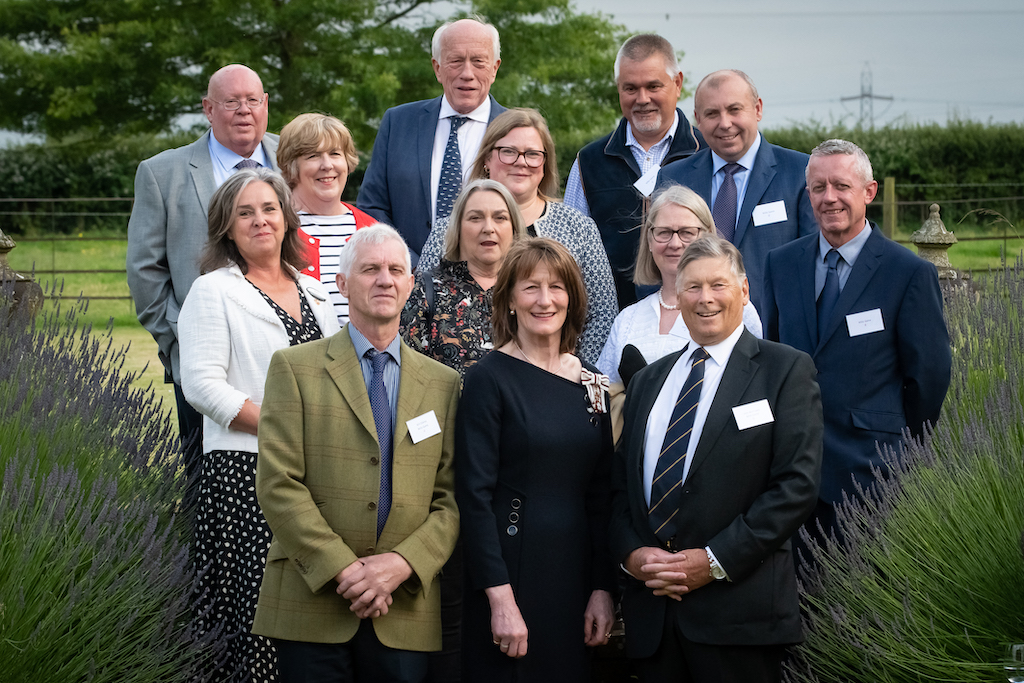The long, dark nights at this time of year provide ample opportunity for catching up on some reading. There is a wonderful book entitled, ‘The History of the Countryside’ by Oliver Rackham which charts the many influences on the development of the English countryside over the years.
Inspired by the book, I set off to walk the countryside around Broseley and Barrow. On first impression, one imagines that the peaceful mid-winter landscape must have changed little since time immemorial. However, with a little detective work, one can see that many factors have created the scenes that we see today.
Farming has been a key land use in this area for many, many years. Located near to Barrow is the deserted medieval village of Arlescott. All signs of the village are now hidden beneath the cold soil. As I survey the landscape, a kestrel floats in the stiff breeze. It seems as though each part of the wing is constantly adjusting to the strength and direction of the wind, all combining to hold the bird perfectly still. On days like this they live up to their country name of the ‘windhover’.
The field is sloping, with a series of steep banks leading to flatter plateaus. These are cultivation terraces dating back to the late 16th or early 17th Century. At this time, fields would have been open and local people would have had rights to grow crops on common land near their village. It is not documented why Arlescott was deserted but the Parliamentary Enclosure Act transformed the English countryside, enclosing common land as part of farms and causing a huge diaspora of people moving to the emerging cities. Many medieval villages were abandoned during this period.
The enclosure of fields using hedges created the tapestry of small fields that is so quintessentially English. Near an entrance to Willey Estate, I can see a hedge that has been laid. The stems are called ‘pleachers’. At this time of year they lie parallel and naked, stripped of the foliage that normally softens the appearance of hedges. The original craft of hedgelaying was closely tied to fox hunting and the aristocracy. Country estates brought a more ‘managed’ appearance to the countryside. Wealthy landowners would encourage tenant farmers to lay hedges, in order to provide perfect jumps for the horses. The estates were pleasure grounds for the privileged.
Hedgelaying also creates dense hedges, perfect for nesting birds. The value of hedges for wildlife is demonstrated as I walk across the Fiery Fields.
A cock blackbird with glossy, black plumage and a vibrant yellow beak is feasting on the haws, sloes and holly berries. Meanwhile, a small flock of fieldfare fly between the trees.
The proximity of Broseley to Ironbridge meant that industry also played its part in the development of this area. Coal was mined to fuel the industrial revolution. Mines and quarries can leave deep scars on the landscape, but in places these scars have healed with spectacular effect.
Some might say that today there is another influence on the countryside, the desire to conserve wildlife. The Haycop is a small nature reserve in Broseley that has been transformed by local volunteers. In the past it was the site of a coal mine. The grassy slopes have been cleared of scrub, a wetland area has been created and woodlands coppiced. In a pile of deadwood that has been left as habitat for invertebrates, I find lots of common shiny woodlice, several leopard slugs and hundreds of tiny springtails. People are now aware of the need to provide habitat for wildlife of all types in the wider countryside.
Rackham’s book encourages the reader to take a closer look at the local countryside to see what factors have influenced the landscape, and interwoven into this is the effect that changes in the countryside must have had on the people of the time. The Highland Clearances are much better documented than the Enclosure Act in England, but the poet John Clare witnessed the enclosure of common land near his village and highlights, with passion, what a major impact enclosure had on the people of the time:
“Enclosure came, and trampled on the grave Of labour’s rights, and left the poor a slave”
Down at the Haycop, we seem to have come full circle. The Enclosure Act broke down centuries-old ties that people had with their local landscape. Now, volunteers are re-connecting with that landscape and making a difference.
Do one thing for wildlife this month:
If you would like to make a difference to a wonderful local nature reserve in Albrighton, why not join a volunteer day that I am organising? Donington and Albrighton Local Nature Reserve Management Committee have been successful in obtaining a grant to improve the surroundings of Donington Pool. On Thursday 19th January from 10am we will be creating a bird feeding station and planting some native shrubs and trees. For more information please contact me on 01746 781192.





